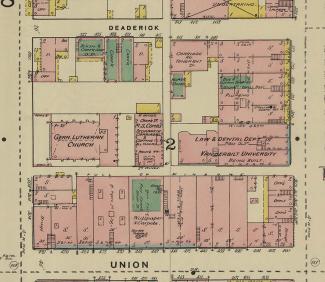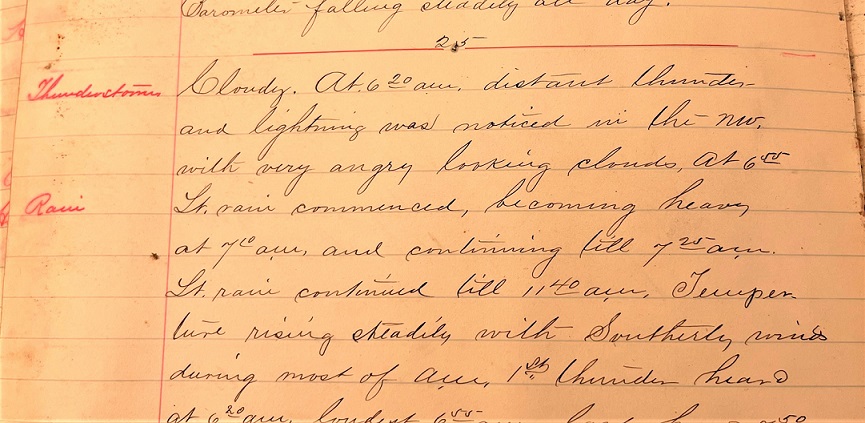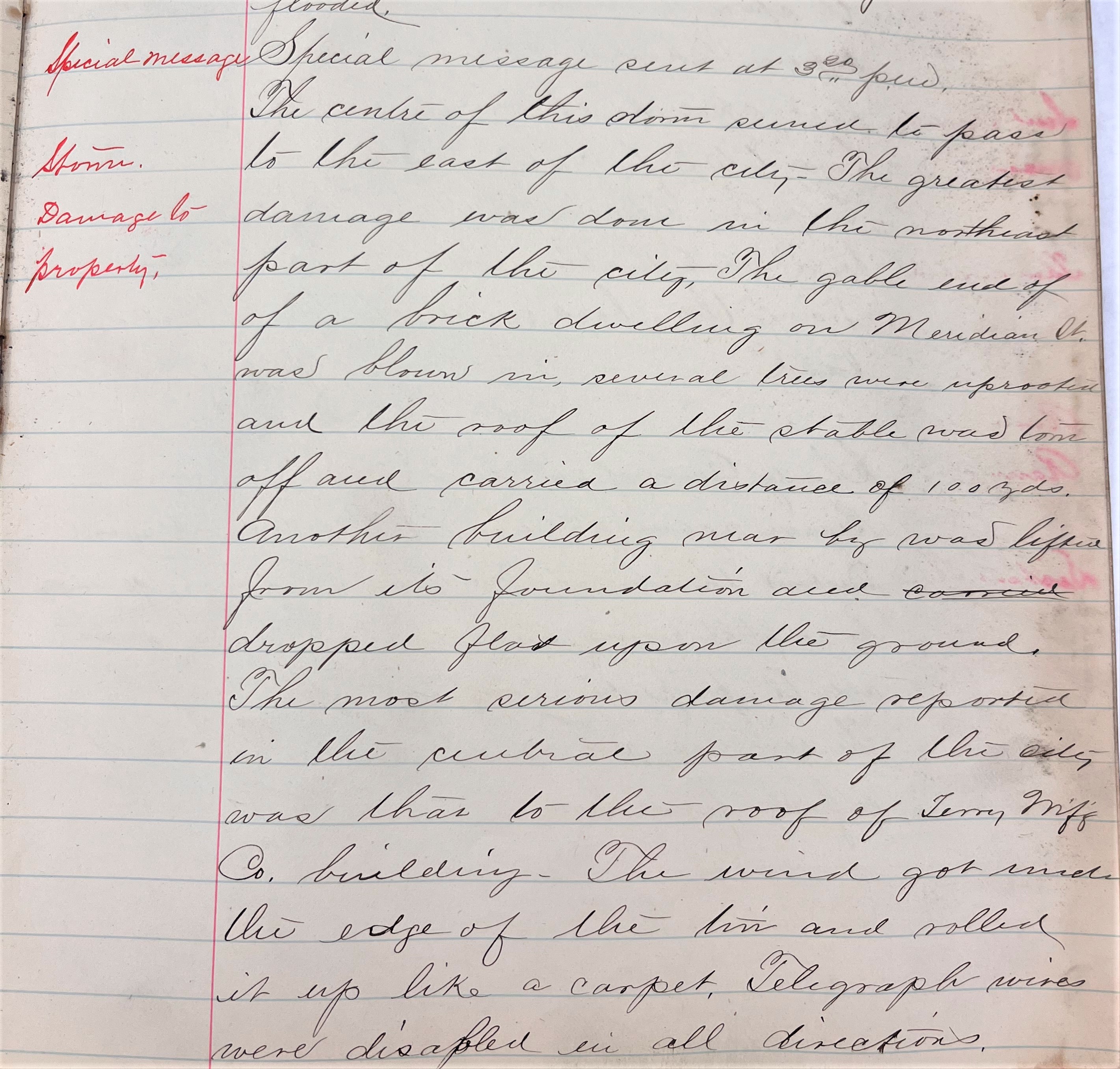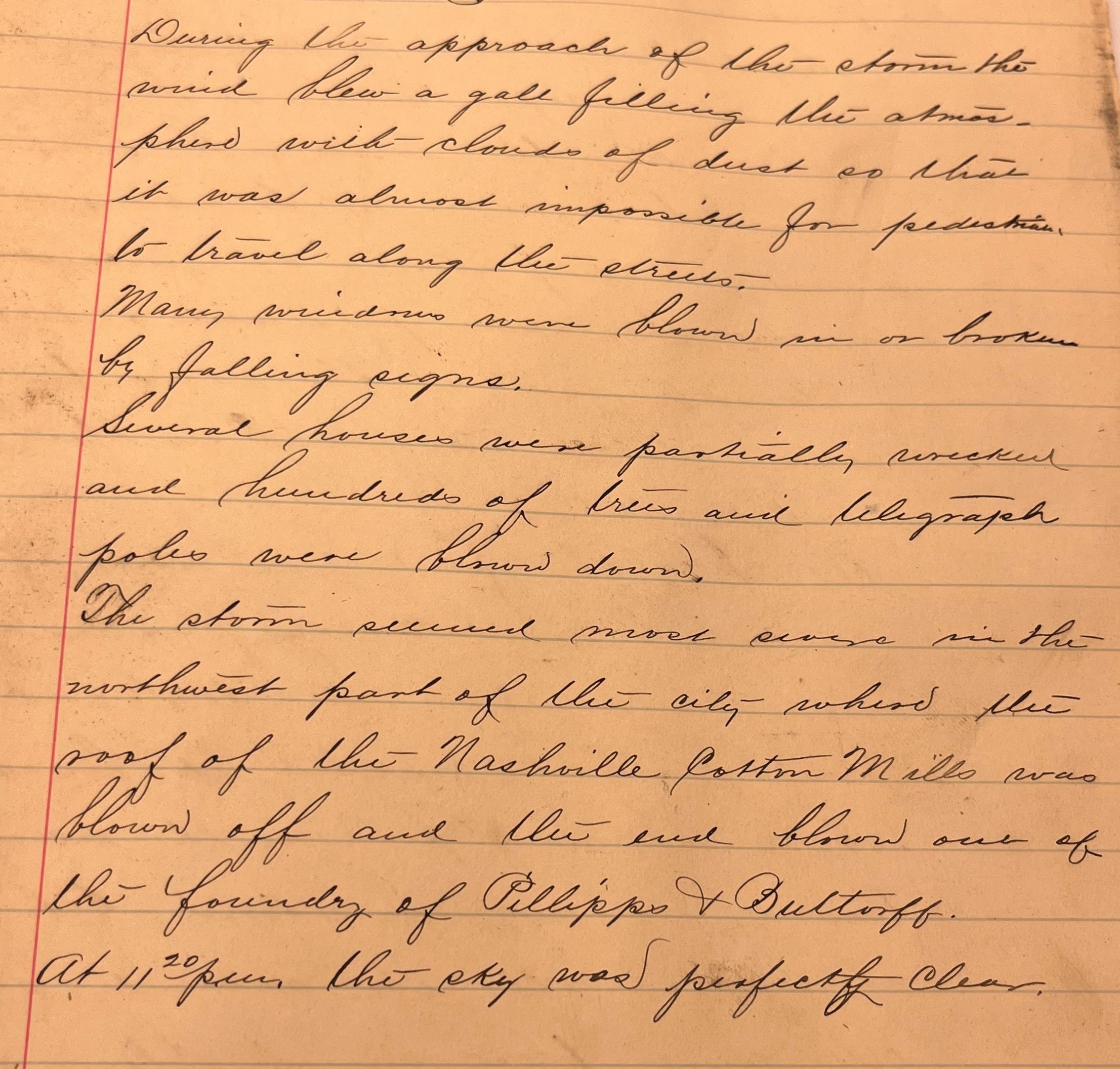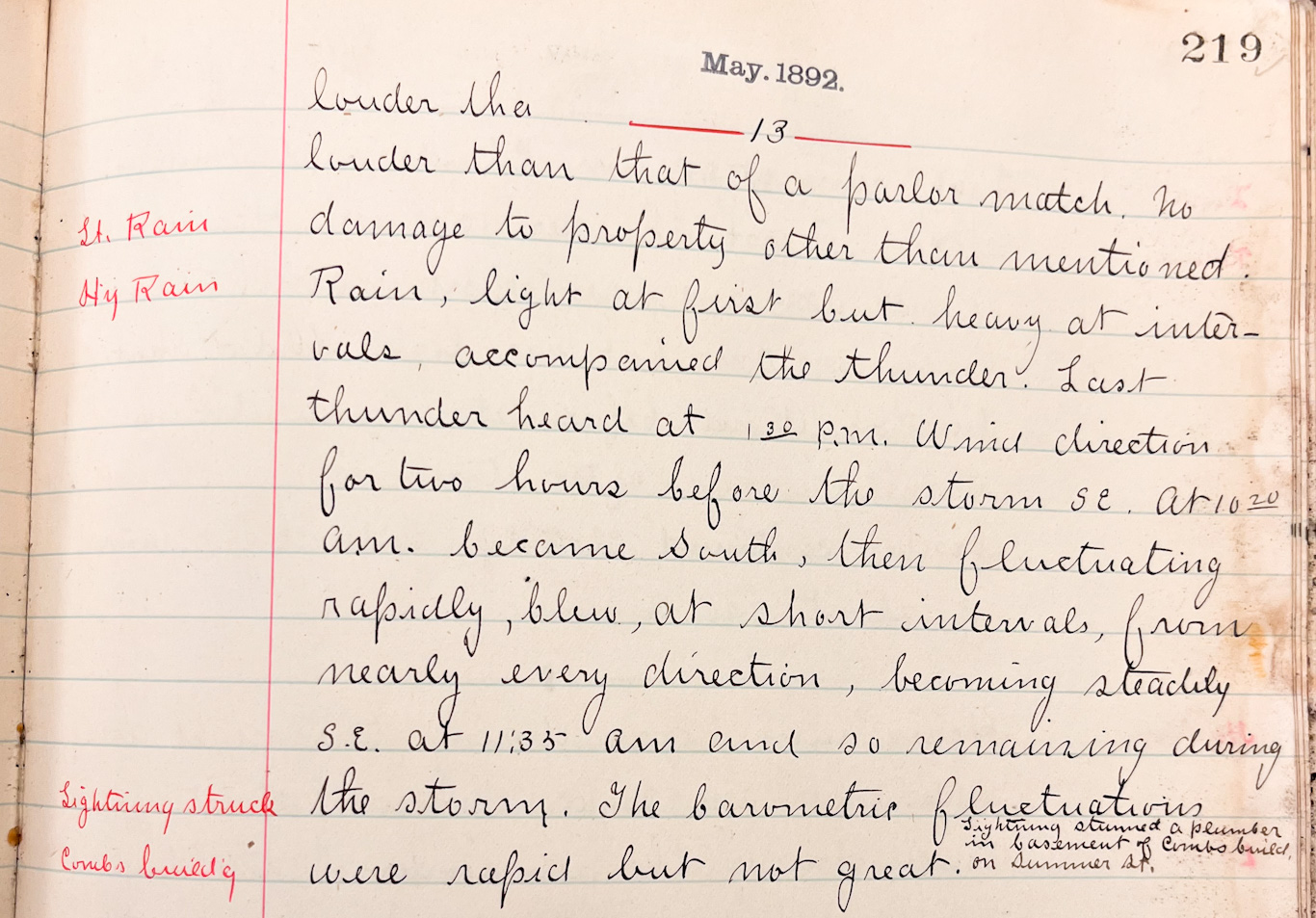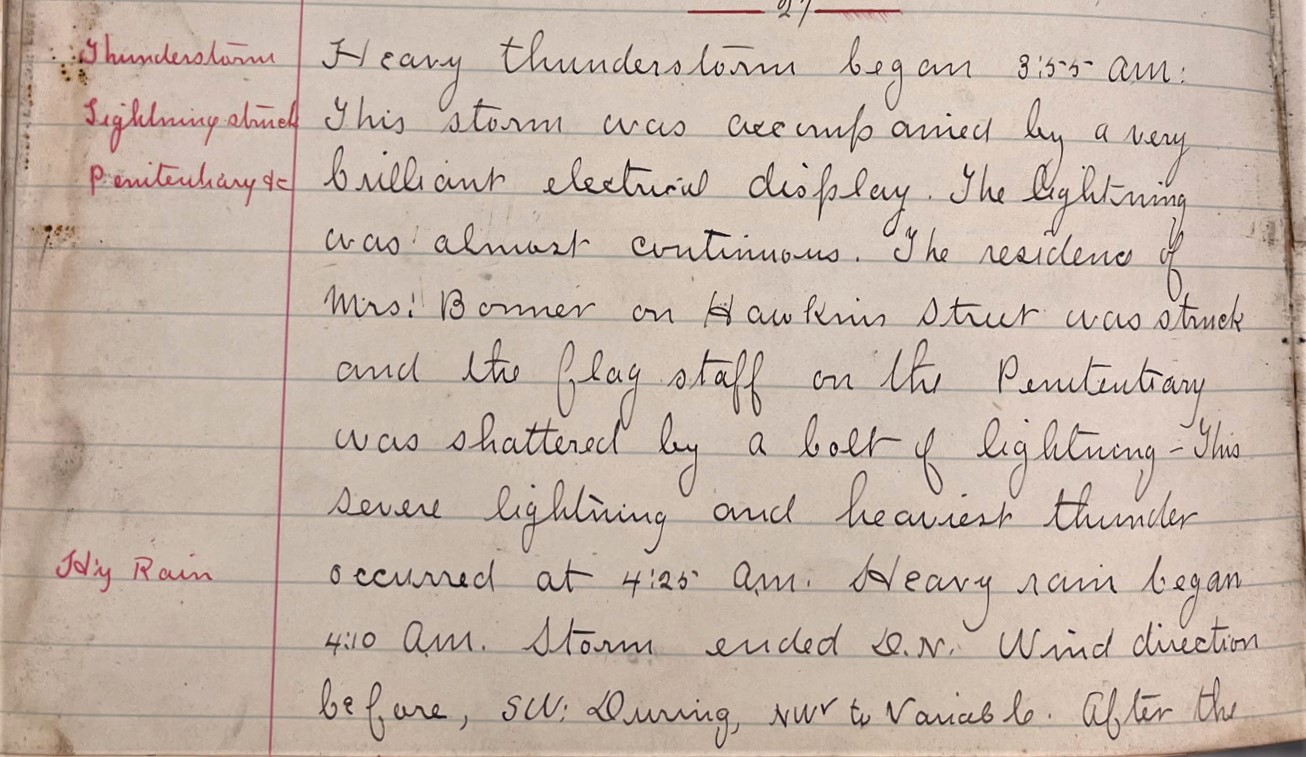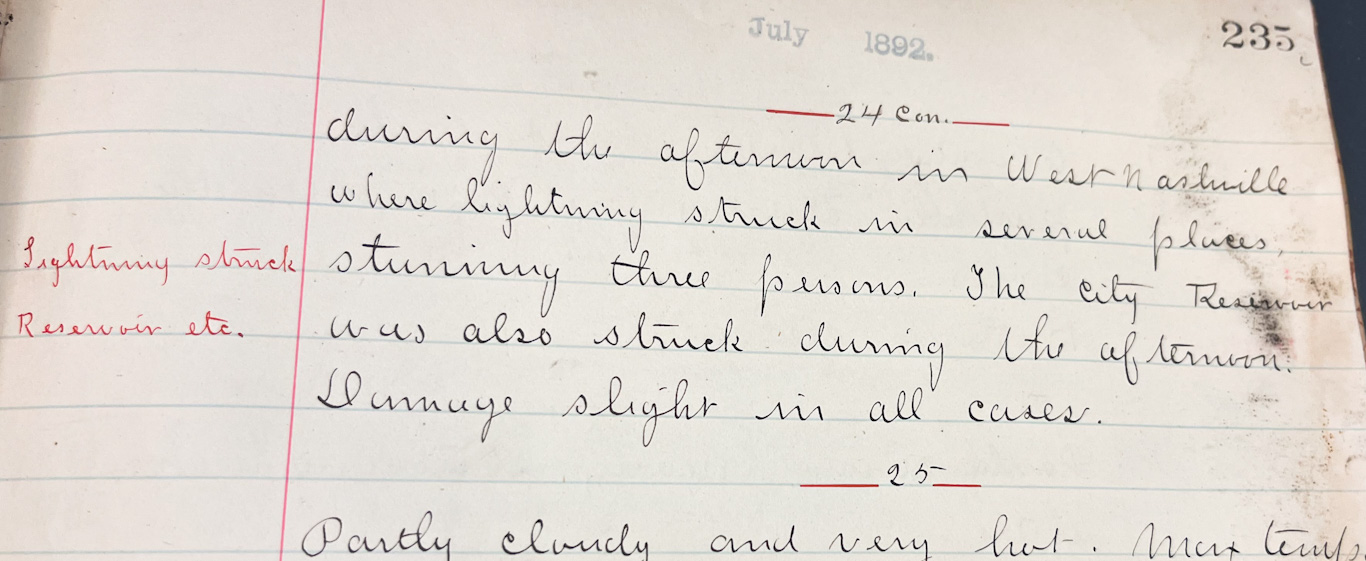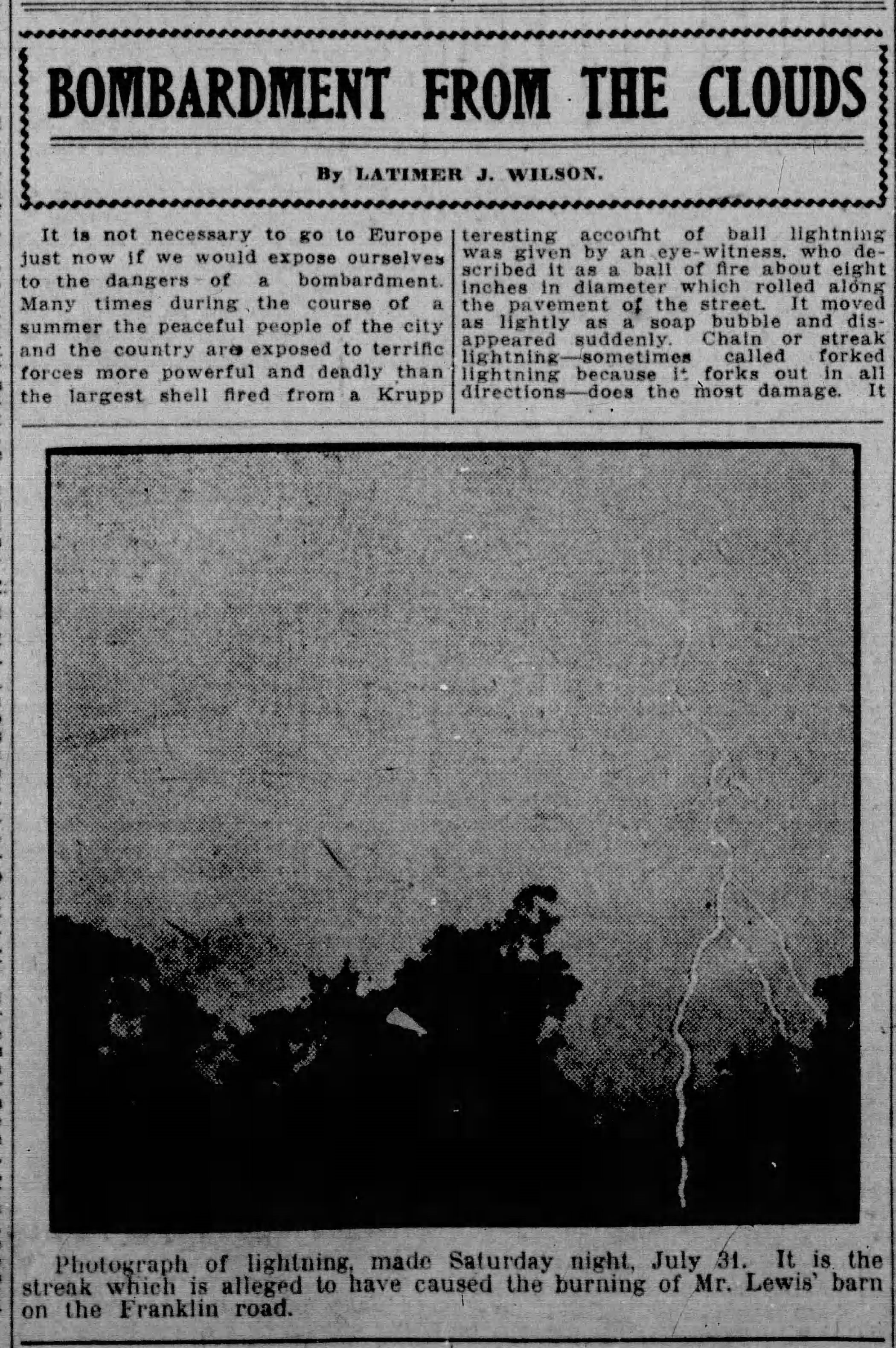
Every year, the third week of June is the week that we observe "Lightning Safety Awareness", because about 1,000 people get struck by lightning every year in the United States. What does this have to do with Metro Archives? A lot actually. Presently, we're transcribing more of the weather reports from the Signal Service, and we have some interesting excerpts to share from these journals.
Now, I'm not an expert on the matter at all, but after reading through some of these journals, I've come across several incidents that talk about lightning striking somewhere in the city and/or surprising people or cutting the electricity off of a building. Seems frightening but also fascinating to me since I'm not the surprised individual.
But before I go into detail of the various incidents, I'd like to provide some further info about the location of the Signal Service office as we've recently discovered from the journals. Also, I did a previous blog post about these journals several years ago, so if you'd like to read more about what the Signal Service was and previous weather events - check out that blog post here.





